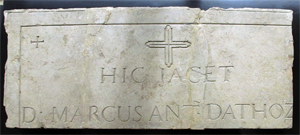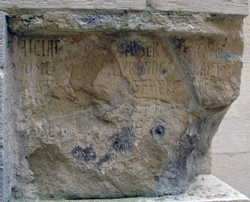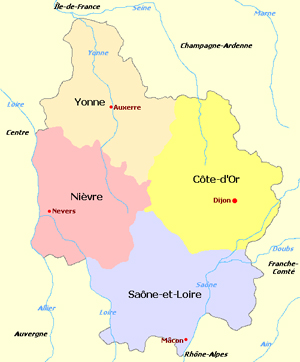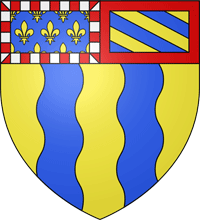|
Cluny Abbey |
| Cluny Abbey was a Benedictine Abbey founded
by William I (The Pious), Duke of Aquitaine and Count of
Auvergne, in 910. Because of its strict adherence to the rule of
St Benedict, it became a leader of Western Monasticism.
Eventually it began to differ from the usual Benedictine
foundations when there became a number of priories dependant on
the Abbey and changes in the division of labour between the
monks. There were originally three churches in the complex built
between the IV and XII centuries. Unfortunately little survives
but the authorities have overcome the challenge of making the
remains well worth a visit. The nearby museum, for example, has
laid out the fragments of the tympanum figures in an expert
reconstruction. |

 |

|
 |
 |
Top
row: Guichard IV, Lord of Beaujeu (1216).
Lid of sarcophagus, left and right sides. This
was discovered outside the church during excavations. The
rebellious barons in the reign of King John invited the French
heir to the throne (Prince Louis, later Louis VII, 'The Lion')
to invade England, offering him the crown. (Not a good choice as
he later became one of the leaders of the dreadful Albigensian
Crusade). King John had earlier submitted to
the Pope who consequently excommunicated the whole
French invading army. Guichard was member of this
invading army and was killed at the siege of Dover. He
died excommunicated but his widow interceded on this behalf with
the Abbot of Cluny, who allowed her husband's body burial there.
Bottom row - Left: Fragment of tombstone of Prior
Dom. Marcus Dahoz (1765) 18th century. Centre: Merovian
sarcophagus 6th to early 7th centuries. This was later reused
for the burial of a woman in the 10th century. It was found near
the south transept of the abbey church of 91. Cluny II
Right: Epitaph of Patis, end of XI
century; a servant of Father Hugues. The inscription is now
difficult to make out. |
|






